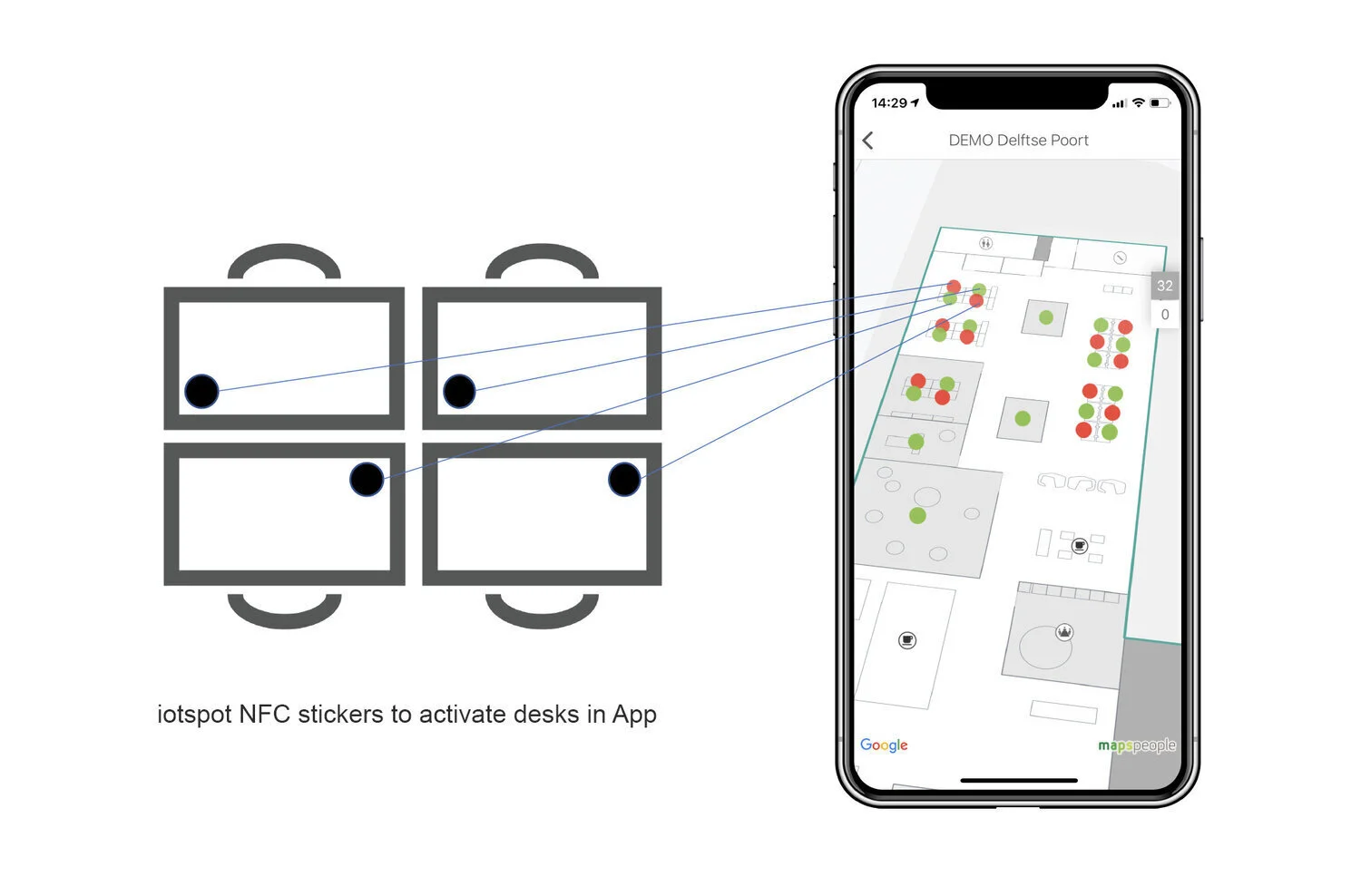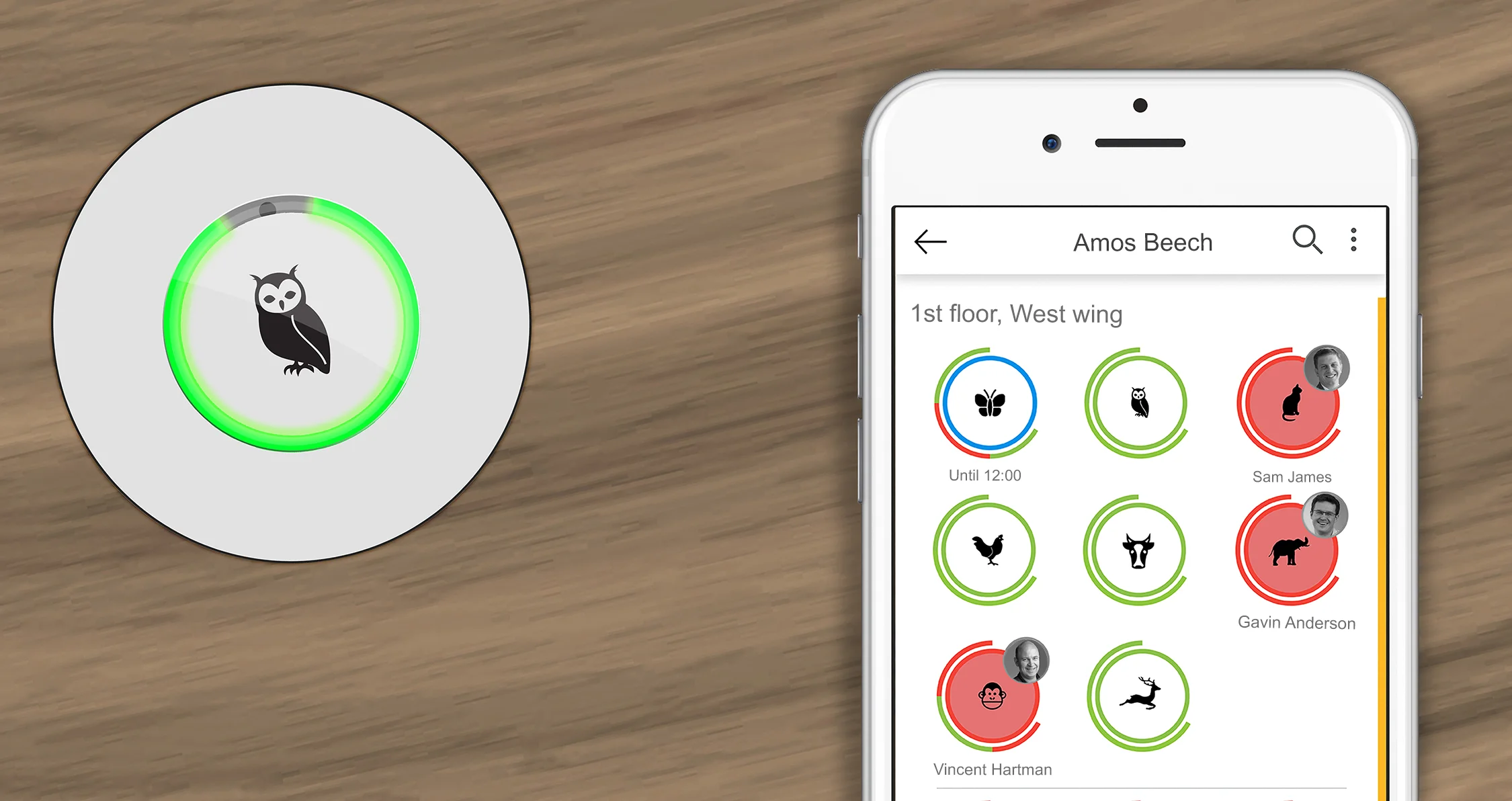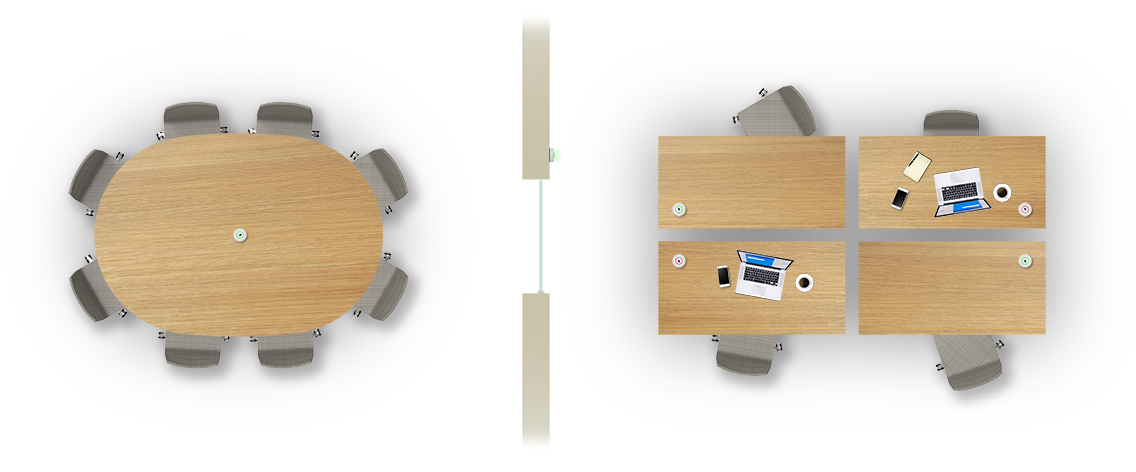What Is a Smart Office? History, benefits and hot desking apps.
Just a little note from the webmaster:
This article was written before the Coronacrisis. If you are looking for smart solutions for working from home, check these links:
Over the years, the office setting has changed dramatically. The workplace set up is probably one of the environments most affected by technological advancements. With office equipment and tools getting smarter every day, the workplace as we know it is now experiencing a major transformation into what is now being referred to as a smart office.
Companies are now caught between a rock and a hard place. The millennial effect coupled with trends like agile working are rapidly becoming a must-have in most offices.
Before we dig in to smart offices, let’s see how we got to where we are today.
A BRIEF HISTORY OF THE SMART OFFICE
The transition from the traditional to the current smart office workplace can be explained by diving it into three phases:
Phase 1 (1996-2006). This is when it all started. Use of laptops, mobile phones, and the Internet was introduced to enhance productivity.
Phase 2 (2006-2016). Technological innovations became sophisticated. Smartphones and other speedy devices were introduced into the market leading to the invention of apps, software, and cloud computing.
Phase 3 (2017 to date). Smart offices are now a trend. Companies now have a better understanding of the concept and are integrating automated systems to make their offices super-efficient, bring down operating costs, and also create a suitable and a well-connected working environment for employees.
According to a study by Allied Market Research, the global smart buildings market is expected to expand at a compound annual growth rate of 29.5 percent between 2012 and 2020.
Let’s sum it up!
What Is a Smart Office?
A smart office is a workplace where technology enables people to work better, faster and, of course, smarter. Beacons, sensors and mobile apps help employees perform menial tasks better and faster, so they have enough time to focus on growing businesses and innovating.
Furthermore, in a smart office, technology also helps people communicate better. Sensors can tell if a person is in the building, where exactly they are at any given moment and even if a certain conference room is booked and for how long.
Do you want to save on real estate?
Click here:
No wonder smart offices are also called the offices of the future.
Now let’s take a closer look at what they bring to the table!
Top Benefits of Smart Offices
The adoption of a smart office could be what is standing between your company and its sustainable growth. Here’s what a smart office can do for you:
Boost Productivity
Companies that use a smart office approach are better positioned to perform well than those using the traditional approach. This concept encourages innovation and creativity. In turn, this influences how the business operations are executed. There is a massive volume of data in a labor-intensive work environment that can be tapped into.
A smart workplace has numerous options for processing, monitoring, and managing data within the building. This information can be used to come up with patterns and strategic plans that boost interactions and connectivity in the office. It provides a unifying platform for personnel and empowers them with the right settings and tools to be innovative and meet the company's goals.
Easier Employee and Office Schedule Management
The smart office system makes it easy to track and manage the employees and the office schedule without wasting a lot of time. Reports, smart devices, and automated systems that help execute business operations make it easy to account for employees' schedule. Collaboration and document sharing is also enhanced due to increased connectivity.
Better Cost Control
It is essential for business managers to test their company’s performance against the costs incurred and corporate objectives. Sensors and automated systems capture real-time data in a smart office setting. This information can be used to analyze, measure, and improve the behaviour of personnel and building performance for cost-effectiveness.
This can be achieved through space optimization and early fault detection to prevent system downtime. Alternatively, a business can use control software with visual interface to manage all systems. For instance, the data collected in a previous working year can be used to determine if the heating units can be regulated to reduce the overall cost.
Insightful Usage Analytics
It is easy for an enterprise to keep tabs on space, building usage, and booking. Space usage data is derived from system alerts and reports. Relevant parties can get alerts and schedules of the usage analytics via email or smartphones to help in decision making.
Leverage of Cloud Computing
The Internet of Things has enabled businesses to execute most of their operations via the internet. Thus, businesses can process, store, manage, and access information on different platforms via the internet from anywhere.
The days of storing data in one of your computers in the office are long gone. Cloud storage offers guaranteed access to information from anywhere even when you have misplaced your laptop or when you deal with a faulty hard drive.
Developing a Smart Brand
Today, a good brand is simply just not enough. You need a smart brand. Integrating smart tools in your daily office operations will enhance communication between your brand and its target audience.
A smart workplace system offers different options that can help you to create a smart brand. For example, your clients do not have to keep signing in at the reception every time you call them for a meeting. You can send them a meeting invite via email that provides them with quick access to the boardroom.
Improved and Unified Communication
The traditional workspace did not have a stable and unified communication system for its employees. Nowadays, messaging apps have made it is easy to communicate with individuals or teams.
A smart office includes a variety of integrated platforms that make it easier for employees to communicate with each other regardless of their location. This can greatly help in decision making as feedback can be instant, which makes things move faster.
Creation of a Better Working Environment
The wellbeing of employees is crucial to any organisation’s performance. A good working environment motivates employees to enjoying coming to work and performing their tasks. We all know that employee absenteeism can have a terrible effect on a company’s performance.
Luckily, absenteeism can be significantly reduced when the work environment meets the employees’ needs.
To eliminate or reduce such challenges, smart offices now include systems that control the overall office environment. By controlling things like heating, lighting, ventilation, water, and air within the building, employees are able to comfortably execute their duties.
According to a survey by Tech Pro Research, most respondents said that smart office technology made their work life so much easier.
Time Saving
The smart office system provides innovative technology solutions that simplify complex tasks. These tasks can be executed within a short time thus allowing employees to get more meaningful work done.
Employee Attraction and Retention
A good working environment will help a company attract talented employees and also enable it to retain them in the long run. Smart office solutions provide such an environment.
They improve communication between employees and provide a working environment for everyone. You can avoid the cost of losing a talented employee by providing a pleasant and smart working space for your team.
Identity Management
Companies can enhance their security by monitoring the individuals within the premises. It is easy to distinguish visitors from employees using a smart office system.
The introduction of ID trackers and facial recognition software in the workplace is the cornerstone of office security. Plus, technology can also help you monitor the time your employees spend doing actual work, irrespective of whether they work in office or remotely.
QUICK SOLUTIONS TO CHALLENGES ARISING FROM SMART OFFICE SYSTEMS
Change, whether big or small, is always met with some challenges. Transitioning to the smart office setup does have its challenge most of which are easy to overcome. Here are some tips to help you make a smooth transition:
Use Existing Capabilities to Transition to a Smart Workplace
As discussed above, establishing a smart office can be expensive for a business. If you have a tight budget, use the existing capabilities to transition. This will help you reduce the cost before you gain financial resources to achieve your long-term goal.
For example, you can introduce a phone entry app instead of using a swipe machine at the gate. Slowly introduce technology to your business to keep your expenses under control and to avoid making your staff uncomfortable.
Monitor the Right Behaviour to Keep Your Company Safe
Smart offices enable employees to work from anywhere using cloud computing. An increase in connectivity increases the risks of privacy breaches. Plus, the more devices are used by your team members, the higher the chances one of them falls victim to a cyber-attack.
Thus, it is essential to communicate to your employees that the company is monitoring their performance and movements within the building and outside of it to avoid privacy breaches. You can also opt to limit the access of social media via the office gadgets by introducing blockchain technology.
Incorporate Hot Desking Apps
Hot desking is one of the cornerstones of any smart office. Companies are now using mobile-friendly hot desking applications that enable employees to flexibly book workspace remotely, whenever they want. The adoption of hot desking is expected to rise significantly especially in London as more businesses in the region maximise their use of digital technologies.
The iOt Space is one such smart office application that not only helps with energy management, but also helps to ensure that the cost of the office space is aligned with commercial priorities through the efficient use of that space.
ADVANTAGES OF INCORPORATING HOT DESKING APPS IN YOUR SMART OFFICE MODEL
Cost Effectiveness
Product photography by: Studiovhf
It is essential for any company striving to increase productivity to look out for alternatives that will help them cut costs down. Using the hot desking approach in a smart office will help you pay less for real estate.
In the traditional work set-up, each employee has a desk. If an employee were absent because of various reasons, then space would end up not being used. This doesn’t happen if you use iOt Space.
Furthermore, in cases of employee downsizing, the company is also left with plenty of unused space, which it continues to pay for.
Hot desking apps are also helping companies cut down on the equipment costs. You do not have to get each employee a device (a laptop or a desktop). By adopting hot desking applications, you can drastically cut down costs AND maintain workforce productivity at the same time. Companies have also been known to spend a lot of money on office furniture. Under the smart office concept, hot desking can significantly reduce this cost since employees share a few workspaces and some of them work remotely.
But in order to make the most of office furniture cost reduction, you need to engage the services of a professional office fit out expert who will recommend a suitable workspace plan that fits your needs.
Improves Relationships and Communication between Workers
Sharing desks and equipment means that there are more interactions among employees compared to the traditional setup. In turn, this strengthens work relationships and improves communication.
Own and Accept Your Work Environment
The working environment influences the attitude of employees towards the company itself. This is why businesses strive to create a favorable working environment to enhance productivity – when employees feel good about their office space, they feel good about their employer.
Hot desking platforms allow employees to find what works best for them. They can determine if they prefer a quiet or social background. The freedom to find out what setting works for the employees makes it easy for them to own and accept their workspace, even consider it a second home.
Acquisition of New Skills
Hot desking provides a platform for employees to interact and share innovative ideas. Working alongside experts from different areas will boost their skills and experience, which is beneficial for both employees and employer. A smart office system is designed not only to improve productivity but also to boost employees’ inter-disciplinary knowledge base through exposure to other skilled personnel.
Employee Flexibility
Hot desking provides employees with freedom while fueling their productivity. In the traditional office setting, employees are required to be at their desk throughout the day, whether they need to or not. Incorporating hot desking in a smart office enhances their flexibility to perform other activities when they have exhausted their assigned duties.
Need to know more about how hot desking and iOt Space can boost productivity and happiness in your office? We’d be happy to share a few case studies with you. Get in touch with our friendly team!
Photocredits: STUDIOVHF















